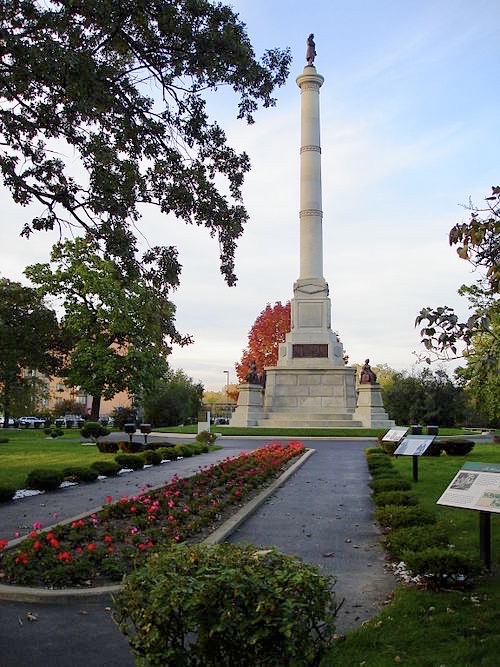– By Tom Schaffner
If you enjoy reading about the history of controversial monuments in Chicago, visit our blog to learn more insightful facts and history about Chicago.
“In fourteen hundred ninety-two, Columbus sailed the ocean blue, because the truth has now emerged, his Chicago statues have been purged.”
Updated version of the “Columbus Day” poem
Christopher Columbus Statues
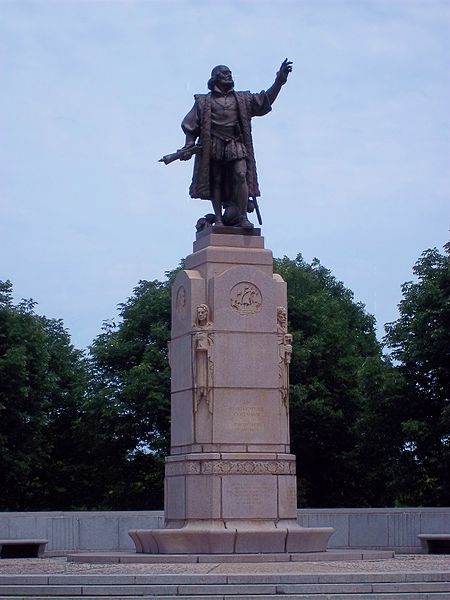
When I was a youngster in elementary school, I was taught that Christopher Columbus was a pretty important historical figure. Not only did he discover the New World (the Americas), he did so on an expedition that included three tiny ships: the Nina, Pinta and Santa Maria. On Columbus Day, our teachers had us recite a corny poem that commemorated the explorer’s accomplishments.
Today, however, it’s a completely different story. It seems that everything I was taught about Columbus was nothing more than propaganda, positive spin. Apparently, the true line on Columbus is that he was a murderer, an enslaver of indigenous people and, with the help of his crew and fellow travelers, the carrier of new diseases to the Americas. In other words, Columbus is not exactly someone we should be honoring with a national holiday or with one of our monuments in Chicago. He’s far too controversial a figure for today.
Somewhat reluctantly, Mayor Lori Lightfoot agreed with this sentiment and on July 25, 2020, under the cover of darkness, quietly ordered two monuments in Chicago that were statues of Christopher Columbus removed from their pedestals — one at the southern tip of Grant Park and the other at Arrigo Park (in the heart of the Little Italy neighborhood). According to Lightfoot, the statues were removed in order to protect public safety which had been threatened the week before when an angry mob of protesters tried to tear the statues down themselves. A number of protesters and policemen were injured in the disturbance.
This is not the first incidence of controversial monuments in Chicago causing angst and violence in the city, however.
Stephen A. Douglas Tomb
On the angst side of the equation is a 96-foot memorial statue at 636 E. 35th St. that rises over the tomb of Stephen A. Douglas, U.S. Senator from Illinois, who is best known for his debates with Abraham Lincoln over the issue of slavery and who lost to Lincoln in the 1860 presidential election. Once a popular figure throughout Illinois, Douglas’s name and reputation have taken a beating in recent times — his wife’s family were slaveholders in Mississippi and Douglas himself was politically soft on the issue, leaving it up to states to decide for themselves to legalize or abolish it. Today, he is perceived as being on the wrong side of the slavery issue. And as if to add gas to a long-smoldering fire, his statue overlooks the vibrant and diverse Bronzeville neighborhood, the center of African American life and culture in Chicago. Perhaps Mr. Douglas is not the most suitable historical figure for the residents of Bronzeville to look up to (literally and figuratively).
Haymarket Statues
One of the monuments in Chicago that caused violence was a statue erected in 1889 in Chicago’s Haymarket District (near West Side) that commemorated the Haymarket Square Riot of 1886, in which protesters fighting for workers’ rights became involved in a melee that killed seven policemen, four civilians and injured dozens. The ensuing riot was — and continues to be — one of the most significant and important events in the history of the global labor movement.
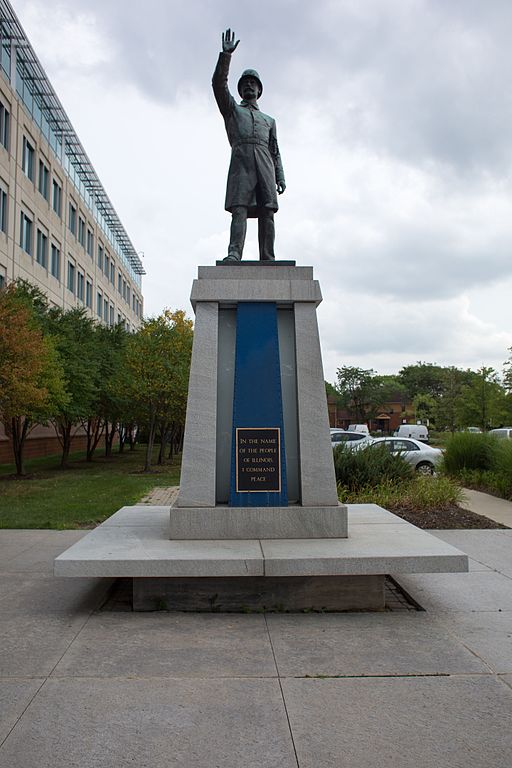 The statue erected three years after the incident turned out to be one of the most controversial statues in Chicago’s history. It was a nine-foot depiction of a Chicago police officer with his arm raised. That was it. Nothing about the fight for workers’ rights and no mention of the others killed and injured that day. Needless to say, many people were displeased with the one-sided nature of this commemoration — glorify the police and ignore the noble cause of the demonstrators. As a result, the statue became a “target” for individuals, groups and organizations.
The statue erected three years after the incident turned out to be one of the most controversial statues in Chicago’s history. It was a nine-foot depiction of a Chicago police officer with his arm raised. That was it. Nothing about the fight for workers’ rights and no mention of the others killed and injured that day. Needless to say, many people were displeased with the one-sided nature of this commemoration — glorify the police and ignore the noble cause of the demonstrators. As a result, the statue became a “target” for individuals, groups and organizations.
Unlike other monuments in Chicago, the Haymarket statue has a long history of being destroyed and built back up.
On May 4, 1927, a streetcar motorman deliberately sidetracked his vehicle and crashed it into the monument saying he was “sick of seeing that policeman with his arm raised.” After several additional vandalizations, the statue was relocated to nearby Union Park for better public visibility. When nearby expressway construction caused the statue to be moved back to its original location in the 1950s, it once again became the target of vandals. In 1968, demonstrators protesting the Vietnam War covered the statue with black paint; in 1969, radicals from the Weather Underground blew the statue to bits by placing a bomb between the policeman’s legs; in 1970, the Weather Underground blew up a “rebuilt” Haymarket statue in the same location. Rebuilt yet again a year later, Mayor Richard J. Daley installed a 24-hour guard next to the statue which cost the city $67,000 per year. In 1972, the city finally got smart — the statue was relocated to a courtyard inside Chicago Police Headquarters on west 35th St. where it stands today.
However, a beautiful thing has happened at the original site of the Haymarket Memorial — and it serves as a guide for those who wish to commemorate historic figures and events throughout our city…today and in the future.
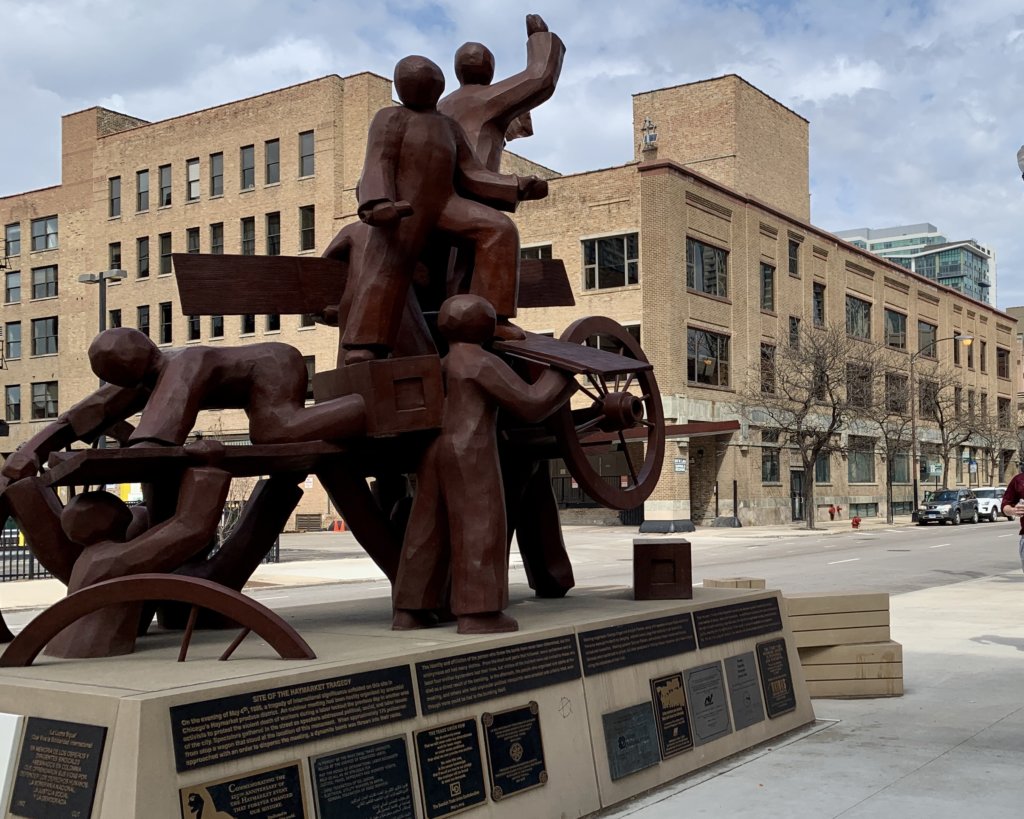
In 1992, the City of Chicago erected a new memorial statue (151 N. Des Plaines St.) to honor and draw attention to all of the people and the events of day. A plaque underneath a bronze statue of a speaker’s wagon reads:
A decade of strife between labor and industry culminated here in a confrontation that resulted in the tragic death of both workers and policemen. On May 4, 1886, spectators at a labor rally had gathered around the mouth of Crane’s Alley. A contingent of police approaching on Des Plaines Street were met by a bomb thrown from just south of the alley. The resultant trial of eight activists gained worldwide attention for the labor movement and initiated the tradition of ‘May Day’ labor rallies in many cities.
The lesson?
History, like art, is best understood — and becomes richer — when it is viewed from different perspectives and it educates in a clear and unbiased fashion. It is also important to remember that attitudes and values of people change over time — what may have been acceptable years ago may no longer be tolerable today.
Last week, Mayor Lightfoot unveiled a new committee that will review all of the monuments in Chicago and statues to determine which pieces “warrant attention or action,” will recommend new monuments or public art (with a nod toward underrepresented women, minorities or historical figures) and engage Chicagoans by creating a dialog about the city’s past.
It’s a monumental step in the right direction.
Holder of two journalism degrees, including a masters from Northwestern University, Tom Schaffner is a native of the Chicago area and has spent nearly 50 years as a writer, editor, publisher and professional communications consultant. He was also the founder, editor, and publisher of the Chicago File, a newsletter for former Chicagoans. Tom is also the co-owner of L Stop Tours.
POPULAR TRIPS
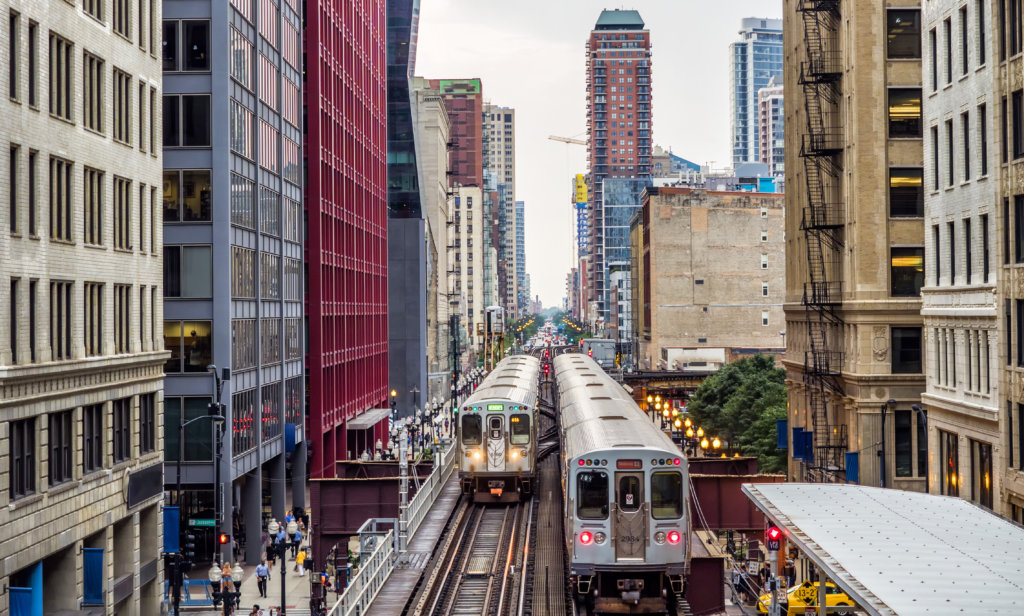
Duration: 3.5 hours
Price: Adult $65
- Tour price includes transit fees. Food/beverages purchased by guests.
- Tour begins and ends in the Loop.
- Walking distance: 1.5 miles
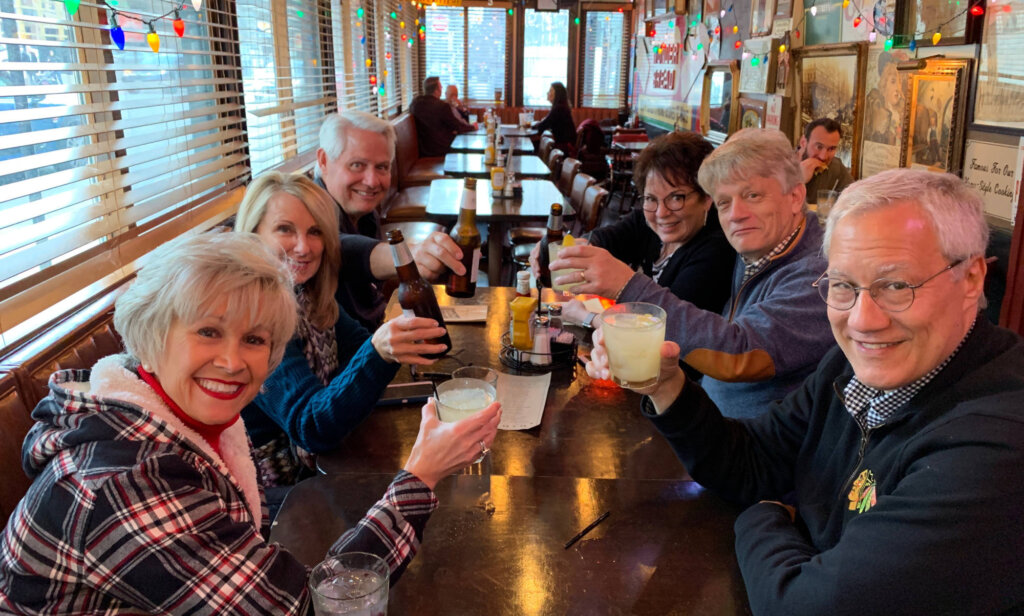
Duration: 3.5 hours
Price: Adult $65
- Price includes transit fees. Food/beverages purchased by guests.
- Tour begins and ends in the Loop.
- Walking distance: 1.1 miles
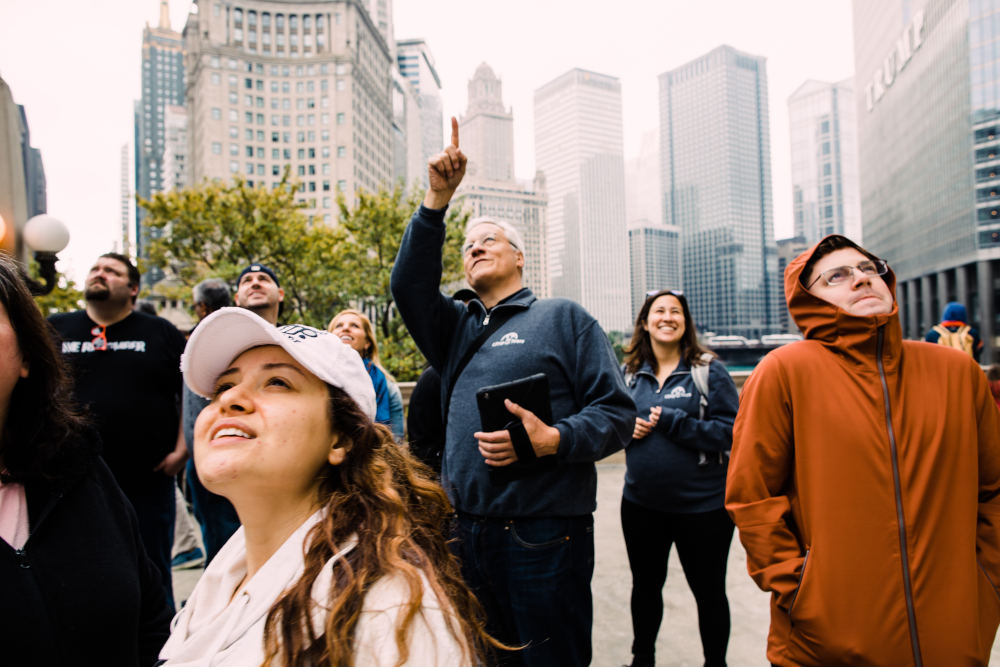
Duration: 3 hours
Price: Adult $65
- Tour price includes professional tour guide, train ride. Food/beverages purchased by guests.
- Tour begins and ends in the Loop.
- Walking distance: 1.5 miles
NEWSLETTER
Stay in the LOOP and subscribe to our monthly newsletter today!

